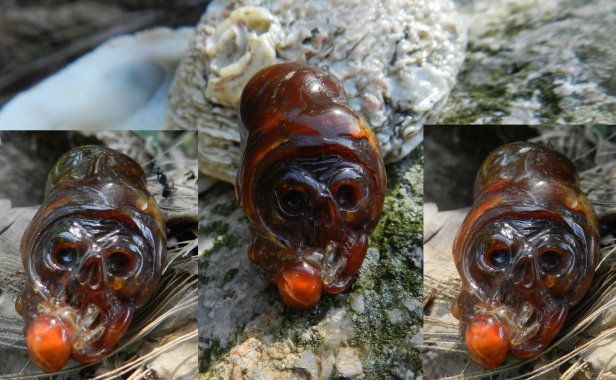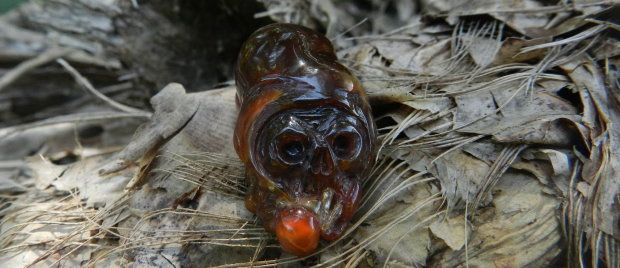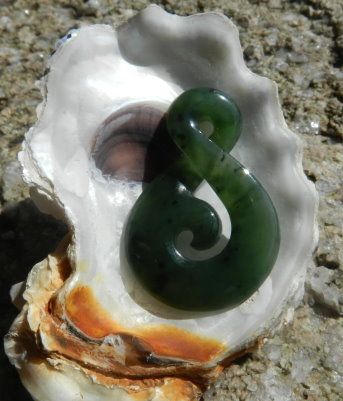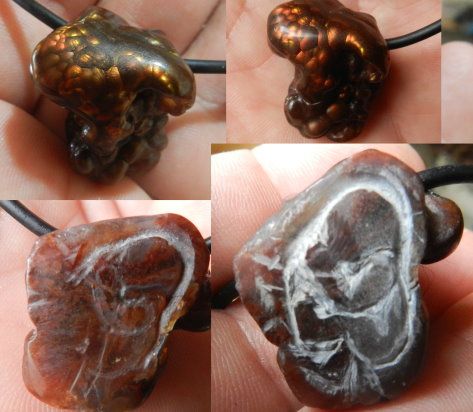Deleted
Deleted Member
Member since January 1970
Posts: 0
|
Post by Deleted on Aug 7, 2014 16:12:50 GMT -5
Shotgunner is going to go to the $1 store for hi tech room temp silica gel testing apparatus tonight.
|
|
gemfeller
Cave Dweller 
Member since June 2011
Posts: 4,059 
|
Post by gemfeller on Aug 7, 2014 16:47:22 GMT -5
Somewhere I have a pile of research on opal synthesis. Actually the words "man made" are more accurate than "synthetic" because no non-natural opal I'm aware of completely duplicates the real thing, usually because it has much less or no water. That's true of Gilson as well.
I can't recall how Gilson did it but I know for a fact that certain mineralized soils, when immersed in water, will form little specks of precious opal. I've seen it done by an old prospector/digger in Idaho. I know that Len Cram, the famous opal expert and photographer, makes his own precious opal in a little shed behind his house in Oz. I've read his theories and it seems he follows the same procedure, leaching silica from "opal dirt" under controlled conditions. That's generally the way they theorize Australia's sedimentary opal deposits formed: surface water leached silica from surface soils and under exact conditions deposited it in subsurface cracks and openings. The trick as I understand in duplicating nature lies in solidifying it from its silica gel state. I think it's been done by eliminating the water in the gel but no one seems to know how nature does the same job and leaves water.
That made me think of a jar of Idaho Spencer opal I've kept in water for over 20 years -- never got around to cutting it. It's left a thin film of material with play of color on the jar's inside surface. I tried to photograph it but no cigar. Still it shows that the precious opal silica can migrate to other surfaces -- and potentially subsurface cracks etc. -- even at average surface temperatures. Interesting stuff, that opal -- it's intrigued me for more than 50 years now.
|
|
|
|
Post by kk on Aug 10, 2014 10:50:25 GMT -5
Finally got the legs to show   Also done, some New Zealand Jade. Needed some practice in curves.  Have a great week everyone, for me now its onward to a new project: The smallest challenge yet. The baby will be at about 10 x 18mm.  |
|
Deleted
Deleted Member
Member since January 1970
Posts: 0
|
Post by Deleted on Aug 10, 2014 17:21:57 GMT -5
totally diggin' the jade curls. That NZ Jade seems quite translucent. Sweet.
|
|
Fossilman
Cave Dweller 
Member since January 2009
Posts: 20,722 
|
Post by Fossilman on Aug 12, 2014 22:28:51 GMT -5
Beautiful KK!!!
|
|
|
|
Post by vegasjames on Aug 12, 2014 23:42:25 GMT -5
Somewhere I have a pile of research on opal synthesis. Actually the words "man made" are more accurate than "synthetic" because no non-natural opal I'm aware of completely duplicates the real thing, usually because it has much less or no water. That's true of Gilson as well. I can't recall how Gilson did it but I know for a fact that certain mineralized soils, when immersed in water, will form little specks of precious opal. I've seen it done by an old prospector/digger in Idaho. I know that Len Cram, the famous opal expert and photographer, makes his own precious opal in a little shed behind his house in Oz. I've read his theories and it seems he follows the same procedure, leaching silica from "opal dirt" under controlled conditions. That's generally the way they theorize Australia's sedimentary opal deposits formed: surface water leached silica from surface soils and under exact conditions deposited it in subsurface cracks and openings. The trick as I understand in duplicating nature lies in solidifying it from its silica gel state. I think it's been done by eliminating the water in the gel but no one seems to know how nature does the same job and leaves water. That made me think of a jar of Idaho Spencer opal I've kept in water for over 20 years -- never got around to cutting it. It's left a thin film of material with play of color on the jar's inside surface. I tried to photograph it but no cigar. Still it shows that the precious opal silica can migrate to other surfaces -- and potentially subsurface cracks etc. -- even at average surface temperatures. Interesting stuff, that opal -- it's intrigued me for more than 50 years now. Yes, opal synthesis starts from a silica gel. There are several methods of doing this but one of the big tricks is getting all the silica spheres uniform in size. I have fooled with making opal a few times and it is not that hard, but time consuming. And the form of clay you start with makes a big difference. The first opal I produced I used kitty litter made from betonite. Worked, but not high quality. My next experiment is with a form of kaolin, which has the same chemical make up of precious opal. The silica coagulates out of the solution forming the gel. As the solution slowly dehydrates the gel loses water becoming denser and harder creating opal. If all the water in the silica dissipates then chalcedony is formed. Vegetable opal is formed from the high silica content in bamboo sap. |
|
gemfeller
Cave Dweller 
Member since June 2011
Posts: 4,059 
|
Post by gemfeller on Aug 13, 2014 0:30:05 GMT -5
[quote author="vegasjames" source="/post/759214/thread" timestamp="1407904945
[/quote]Yes, opal synthesis starts from a silica gel. There are several methods of doing this but one of the big tricks is getting all the silica spheres uniform in size. I have fooled with making opal a few times and it is not that hard, but time consuming. And the form of clay you start with makes a big difference. The first opal I produced I used kitty litter made from betonite. Worked, but not high quality. My next experiment is with a form of kaolin, which has the same chemical make up of precious opal. The silica coagulates out of the solution forming the gel. As the solution slowly dehydrates the gel loses water becoming denser and harder creating opal. If all the water in the silica dissipates then chalcedony is formed. Vegetable opal is formed from the high silica content in bamboo sap. [/quote] Yes, silica gel precipitates out of certain highly silicated clays, usually altered volcanic ash. I spent a week digging precious opal in Virgin Valley, NV with Keith Hodson, owner of the Rainbow Ridge Mine, the area's oldest opal mine. The opal occurs in a highly-silicated montmorillonite clay laid down millions of years ago by the McDermitt Caldera, predecessor of today's Yellowstone. That clay, derived from volcanic ash, accounts for the many precious and common opal deposits in that region of NV/OR/ID. It's also the source of the many amazing quartz minerals in the region. The question of how the spheres are ordered to produce precious vs. non-precious opal is interesting. The progression from Opal A to Opal B I think depends on many factors: temperature, time, acidity, etc. [/p]
There's a fascinating opal-collecting area in California (I don't have the location) where opal is being deposited from that kind of clay. Maybe someone will chime in with the location. A former neighbor gave me several samples of precious opal being deposited from that grey highly-silicated clay. It looks just like the NV and ID clays that produce precious opal.
Vegetable opal is called Tabasheer. It forms generally at and near the joints both above and below the septum in certain kinds of bamboo. It may be the silicate that makes it possible to polish Burmese jadeite using nothing but a cylinder of bamboo.
Interesting topic. Thanks for your input.
|
|
|
|
Post by vegasjames on Aug 13, 2014 0:38:00 GMT -5
[quote author="vegasjames" source="/post/759214/thread" timestamp="1407904945
Yes, opal synthesis starts from a silica gel. There are several methods of doing this but one of the big tricks is getting all the silica spheres uniform in size. I have fooled with making opal a few times and it is not that hard, but time consuming. And the form of clay you start with makes a big difference. The first opal I produced I used kitty litter made from betonite. Worked, but not high quality. My next experiment is with a form of kaolin, which has the same chemical make up of precious opal. The silica coagulates out of the solution forming the gel. As the solution slowly dehydrates the gel loses water becoming denser and harder creating opal. If all the water in the silica dissipates then chalcedony is formed. Vegetable opal is formed from the high silica content in bamboo sap. [/quote] Yes, silica gel precipitates out of certain highly silicated clays, usually altered volcanic ash. I spent a week digging precious opal in Virgin Valley, NV with Keith Hodson, owner of the Rainbow Ridge Mine, the area's oldest opal mine. The opal occurs in a highly-silicated montmorillonite clay laid down millions of years ago by the McDermitt Caldera, predecessor of today's Yellowstone. That clay, derived from volcanic ash, accounts for the many precious and common opal deposits in that region of NV/OR/ID. It's also the source of the many amazing quartz minerals in the region. The question of how the spheres are ordered to produce precious vs. non-precious opal is interesting. The progression from Opal A to Opal B I think depends on many factors: temperature, time, acidity, etc. [/p]
There's a fascinating opal-collecting area in California (I don't have the location) where opal is being deposited from that kind of clay. Maybe someone will chime in with the location. A former neighbor gave me several samples of precious opal being deposited from that grey highly-silicated clay. It looks just like the NV and ID clays that produce precious opal.
Vegetable opal is called Tabasheer. It forms generally at and near the joints both above and below the septum in certain kinds of bamboo. It may be the silicate that makes it possible to polish Burmese jadeite using nothing but a cylinder of bamboo.
Interesting topic. Thanks for your input.
[/quote] Yes, temperature and pH are big factors in the formation of opal and especially precious opal. Chemical composition is still the other big factor since not all clays have the same composition. Opals are not pure silica either. There are other trace elements. One is aluminum oxide, also found in the clays in which clay opals form. The higher the percentage of aluminum oxide within the stone the harder the stone becomes. |
|
Deleted
Deleted Member
Member since January 1970
Posts: 0
|
Post by Deleted on Aug 15, 2014 16:53:08 GMT -5
vegasjames - does gibbsite figure into any of this opal chemistry? Is this the source of the aluminum in harder opals?
|
|
gemfeller
Cave Dweller 
Member since June 2011
Posts: 4,059 
|
Post by gemfeller on Aug 15, 2014 17:53:12 GMT -5
|
|
|
|
Post by vegasjames on Aug 16, 2014 11:28:37 GMT -5
vegasjames - does gibbsite figure into any of this opal chemistry? Is this the source of the aluminum in harder opals? Hi Scott, I doubt it. Gibbsite (aluminum hydroxide) can be found in the area of opals, but this is easily explained. Precious opal is derived from a type of kaolinite clay, which is a source of silica and aluminum oxide. Kaolinite can be a weathering byproduct of muscovite: 2KAl3Si3O10(OH)2 + 2H+ + 3H2O <--> 3Al2Si2O5(OH)3+ 2K+ But muscovite can also weather forming gibbsite: KAl3Si3O10(OH)2 + H+ + 9H2O <--> 3Al(OH)3 + K+ + 3H4SiO4 Although gibbsite has been used to make a synthetic opal-like compound. From the research I have seen though I would say that the kaolinite is the source for both the silica and the aluminum oxide in precious opal. And other clays can provide silica and aluminum oxide for other types of opal. |
|
|
|
Post by vegasjames on Aug 16, 2014 11:50:34 GMT -5
Interesting. Thanks for posting it. |
|
|
|
Post by kk on Aug 18, 2014 19:53:32 GMT -5
Thank you guys for continuing this discussion. I'm in way over my head on this subject and can understand very little of what you guys are up to, but its interesting read that might one day come in handy.   |
|
|
|
Post by gingerkid on Aug 25, 2014 15:18:15 GMT -5
kk ? Wondering if you are doing well and busy working on your jade carvings for the contest? 
|
|
|
|
Post by kk on Aug 26, 2014 0:25:25 GMT -5
kk ? Wondering if you are doing well and busy working on your jade carvings for the contest?  Yeah, tired, but everything is OK. Finishing off another fire agate this week. Restarted the white jade project and continuing on the Black piece. Finally got round shaping the third head and as we speak, trying to get black opal shaped for its eyes by hand. At a mm an eye that will still take a while.  But what kept me from forums and FB is a school-project. Got to put together a 3 Level Phonetics program for the school-year. And naturally, they want to see the whole thing right on the first day. Got thus far over 200 hours into it, and still a bit to go before next week. |
|
|
|
Post by gingerkid on Aug 26, 2014 12:43:48 GMT -5
Good to hear from you, kk! That's quite a school project you have to complete. Hope you get some well-deserved R&R soon!  Mm-sized black opal eyes for your jade carving? |
|
|
|
Post by kk on Aug 26, 2014 17:37:20 GMT -5
 Mm-sized black opal eyes for your jade carving? Yep. No fire as such in it. But crystal pure with some sheen if I get the angle right. Should contrast well with the black of the jade and will definitively lift out the third face from behind the girls. P.s.: just updated the thread on the jade contest with newest pictures. Give up hiding, everyone else is too, so there is no fun in the symposium with no-one talking.  |
|